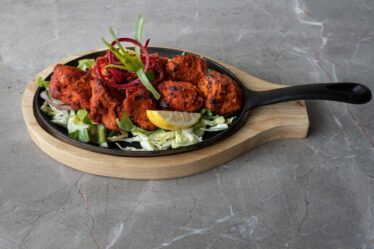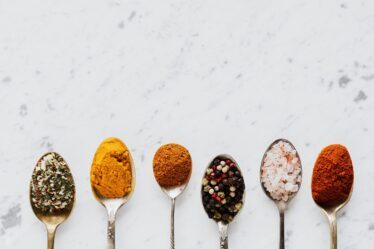
Panca Pepper is a versatile spice that can add flavor and heat to any dish. Whether you’re looking to spice up your favorite recipes or explore new flavors, Panca Pepper is a must-have ingredient in your pantry. In this article, we will delve into the history and origins of Panca Pepper, explore its unique flavor profile, discuss its health benefits, provide tips for cooking with it, and even share some delicious recipes. So get ready to embark on a culinary journey with Panca Pepper!
Key Takeaways
- Panca Pepper is a versatile spice that can be used in a variety of dishes.
- Panca Pepper originates from Peru and has a rich history and cultural significance.
- Adding Panca Pepper to your favorite dishes can enhance their flavor and add a spicy kick.
- Panca Pepper has numerous health benefits, including aiding digestion and boosting immunity.
- When cooking with Panca Pepper, it’s important to use it in moderation and pair it with complementary flavors.
The History and Origins of Panca Pepper: A Taste of Peru
Panca Pepper is an essential ingredient in Peruvian cuisine and has a rich history that dates back centuries. It is made from dried and smoked red peppers called Aji Panca, which are native to Peru. The Aji Panca peppers are harvested when they are fully ripe and then sun-dried before being smoked over wood fires. This process gives the peppers their distinct smoky flavor and deep red color.
In Peruvian cuisine, Panca Pepper is used in a variety of dishes, from stews and soups to marinades and sauces. It adds a unique flavor profile that is both smoky and slightly sweet, with a mild to medium heat level. Unlike other peppers, Panca Pepper has a complex flavor that is not just about heat but also about depth and richness.
How Panca Pepper Can Add Flavor and Heat to Your Favorite Dishes
Panca Pepper can elevate the flavor of many dishes, adding both heat and depth. One classic Peruvian dish that benefits from the addition of Panca Pepper is Lomo Saltado, a stir-fry made with beef, onions, tomatoes, and spices. The smoky flavor of the Panca Pepper complements the beef perfectly, while the heat adds a kick to the dish.
Another dish that can benefit from the addition of Panca Pepper is ceviche, a popular Peruvian dish made with raw fish marinated in citrus juices. Adding a touch of Panca Pepper to the marinade can give the ceviche a smoky and spicy twist, taking it to a whole new level.
Panca Pepper can also be used in marinades, rubs, and sauces. For example, you can make a delicious Panca Pepper marinade for grilled chicken or steak by combining Panca Pepper with garlic, lime juice, and olive oil. The smoky and spicy flavors of the Panca Pepper will infuse the meat, making it incredibly flavorful.
The Health Benefits of Panca Pepper: From Digestion to Immunity
| Health Benefit | Description |
|---|---|
| Improved Digestion | Panca pepper stimulates the production of digestive juices, aiding in the breakdown of food and absorption of nutrients. |
| Reduced Inflammation | The capsaicin in Panca pepper has anti-inflammatory properties, which can help reduce inflammation in the body. |
| Lowered Blood Pressure | Studies have shown that consuming Panca pepper can help lower blood pressure levels. |
| Boosted Immunity | Panca pepper contains high levels of vitamin C, which can help boost the immune system and protect against illness. |
| Improved Heart Health | The antioxidants in Panca pepper can help reduce the risk of heart disease by protecting against oxidative damage. |
In addition to its delicious flavor, Panca Pepper also offers several health benefits. It is rich in antioxidants, which help protect the body against free radicals and reduce inflammation. Studies have shown that the capsaicin found in peppers like Panca Pepper can help boost metabolism and aid in weight loss.
Panca Pepper is also known for its digestive benefits. It can stimulate the production of digestive enzymes, which can improve digestion and alleviate symptoms such as bloating and indigestion. Additionally, the capsaicin in Panca Pepper has been found to have antimicrobial properties, which can help fight off harmful bacteria in the gut.
Furthermore, Panca Pepper is packed with vitamins and minerals that are essential for overall health. It is a good source of vitamin C, which is important for immune function and collagen production. It also contains vitamin A, potassium, and iron.
Cooking with Panca Pepper: Tips and Tricks for Best Results
When cooking with Panca Pepper, it’s important to balance its heat with other flavors to achieve the desired taste. If you prefer a milder heat, you can remove the seeds and membranes from the peppers before using them. This will reduce the spiciness while still allowing you to enjoy the smoky flavor of the Panca Pepper.
To get the most flavor out of Panca Pepper, it’s important to use high-quality peppers. Look for peppers that are deep red in color and have a strong smoky aroma. Avoid peppers that are pale or have a musty smell, as these may be old or of lower quality.
When using Panca Pepper in marinades or sauces, it’s best to let the flavors meld together by allowing the dish to sit for a while before serving. This will allow the smoky flavor of the Panca Pepper to infuse the dish and create a more complex taste.
Panca Pepper Recipes: From Appetizers to Desserts

Now that you know how versatile and flavorful Panca Pepper can be, let’s explore some delicious recipes that showcase its unique taste. From appetizers to desserts, there are endless possibilities when it comes to cooking with Panca Pepper.
1. Panca Pepper Shrimp Skewers: Marinate shrimp in a mixture of Panca Pepper, garlic, lime juice, and olive oil. Thread the shrimp onto skewers and grill until cooked through. Serve with a squeeze of fresh lime juice and enjoy!
2. Panca Pepper Chicken Tacos: Season chicken breasts with Panca Pepper, cumin, garlic powder, and salt. Grill or pan-fry until cooked through. Serve in warm tortillas with your favorite toppings such as avocado, salsa, and cilantro.
3. Panca Pepper Chocolate Mousse: Melt dark chocolate and mix in a pinch of Panca Pepper for a spicy twist on classic chocolate mousse. Whip cream until stiff peaks form and fold it into the chocolate mixture. Chill in the refrigerator until set and serve with a dollop of whipped cream on top.
Pairing Panca Pepper with Different Cuisines: Latin, Asian, and More
While Panca Pepper is a staple in Peruvian cuisine, it can also be used to add flavor and heat to dishes from other cultures. Its smoky and slightly sweet flavor profile makes it a versatile spice that pairs well with a variety of cuisines.
In Latin cuisine, Panca Pepper can be used in dishes such as Mexican mole sauce or Brazilian feijoada. The smoky flavor of the Panca Pepper complements the rich and complex flavors of these dishes.
In Asian cuisine, Panca Pepper can be used in stir-fries, curries, and noodle dishes. Its heat and smokiness can add depth to dishes such as Thai red curry or Chinese kung pao chicken.
Where to Buy Panca Pepper: Online and Local Options
If you’re looking to buy Panca Pepper, there are several options available both online and locally. Many specialty spice shops carry Panca Pepper, so you may be able to find it at a store near you. Additionally, there are several online retailers that sell high-quality Panca Pepper, such as Amazon and specialty food websites.
When buying Panca Pepper, it’s important to choose a reputable source to ensure that you’re getting a high-quality product. Look for sellers that provide information about the origin of the peppers and their production process. This will help ensure that you’re getting authentic Panca Pepper that is both flavorful and safe to consume.
Storing and Preserving Panca Pepper: How to Keep It Fresh
To keep your Panca Pepper fresh and flavorful, it’s important to store it properly. The best way to store Panca Pepper is in an airtight container in a cool, dark place such as a pantry or cupboard. This will help protect the peppers from moisture and light, which can cause them to lose their flavor.
Panca Pepper has a shelf life of about one year when stored properly. However, over time, the flavor and heat of the peppers may diminish. To test if your Panca Pepper is still fresh, give it a sniff. If it smells musty or off, it’s time to replace it.
Exploring Other Peruvian Spices: Discovering the Flavors of a Rich Cuisine
While Panca Pepper is a star ingredient in Peruvian cuisine, there are several other spices that are also essential to the flavors of this rich cuisine. Some other popular Peruvian spices include Aji Amarillo, Rocoto Pepper, and Huacatay.
Aji Amarillo is a bright yellow pepper that is slightly fruity and has a medium heat level. It is often used in Peruvian ceviche, sauces, and stews.
Rocoto Pepper is a spicy pepper with a unique flavor that is both fruity and floral. It is often used in Peruvian dishes such as rocoto relleno, which is a stuffed pepper dish.
Huacatay, also known as Peruvian black mint, has a strong and aromatic flavor that is reminiscent of mint and basil. It is often used in sauces and marinades.
By exploring these other Peruvian spices, you can further enhance your culinary repertoire and discover new flavors.
Panca Pepper is a versatile spice that can add flavor and heat to any dish. Its unique smoky and slightly sweet flavor profile makes it a favorite ingredient in Peruvian cuisine. Whether you’re cooking traditional Peruvian dishes or experimenting with fusion recipes, Panca Pepper is sure to elevate your culinary creations. So go ahead and give it a try – your taste buds will thank you!
If you’re a fan of unique and flavorful ingredients, then you’ll definitely want to check out this article on Flavorful Sips about the fascinating panca pepper. Known for its smoky and fruity flavor, panca pepper is a staple in Peruvian cuisine. It adds a delightful kick to dishes like ceviche and stews. But did you know that panca pepper can also be used in cocktails? Discover how to incorporate this versatile ingredient into your drinks with the help of this informative article on Flavorful Sips: Perfecting Your Non-Alcoholic Margarita Technique.



